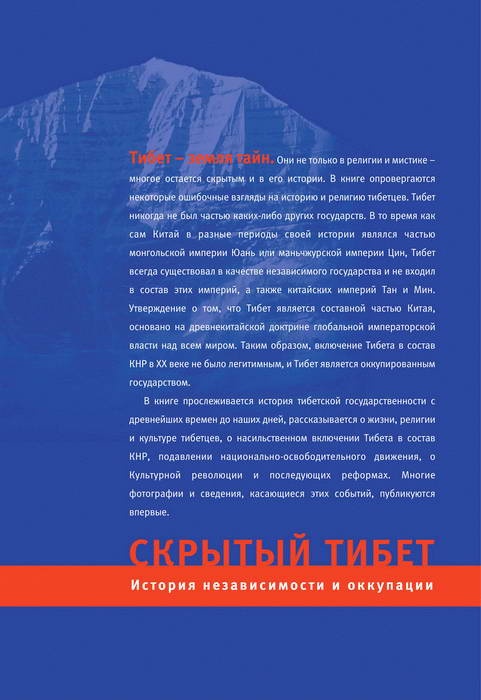Wiley A.S. 2004. An Ecology of High-Altitude Infancy. Cambridge: Cambridge Univ. Press.
Woeser Ts. A record of the Tibetan unrest: March 10 — March 25. — http://www.phayul.com/news/article.aspx?id=74713&article=A+Record+of+the+Tibe tan+Unrest%3a+March+10%e2%80%94March+25#. 01.11.2008. [Woeser] Diagnosing the Current Situation in Tibet. Interview with the Tibetan author
Woeser. 1 May 2008. — http://www.tibetwrites.org/7Diagnosing-the-Current-Situation. 21.02.2009.
Woeser (Wei Se). 2006. Sha jie. Sishi nian de jiyi jinqu. Jingtou xia de Xizang wenhua. Di yi ci gongkai (Forbidden memory. Tibet during the Cultural Revolution), Taipei: Dakuai Wenhua, 296 с
Worldwide Tibet Movement. — http://www.tibet.net/en/diir/wwtm/index.html. 07.06.2009.
Wren C.S. 1983. Life and death in Tibet: the past clings fiercely. — New York Times, 24.05.1983.
Wright A.R. 1904. Tibetan drum and trumpet. — Folklore, v. 15, no. 3 (Sep.: 29, 1904).
Wu Т., Wang X., Wei C, Cheng H., Wang X., Li Y, Dong G., Zhao H., Young P., Li G., Wang Z. Hemoglobin levels in Qinghai-Tibet: different effects of gender for Tibetans vs. Hans.. — J. Appl. Physiol., v. 98.
Wu Keliang, Wu Changxin. Documentation and mining of yak culture to promote a sustainable yak husbandry. — В кн.: Proceedings of the International Congress on Yak, Chengdu, Sichuan, P.R. China 2004. — http://www.ivis.org/proceedings/yaks/2004/session7/Keliang.pdf.
Yan Hao. 2000. Tibetan population in China: myths and facts re-examined. — Asian Ethnicity, v. 1, no. 1. — http://www.case.edu/affil/tibet/booksAndPapers/tibetan.population.in. china.pdf. 25.01.2009.
Yeh E.T. 2003. Tibetan range wars: spatial politics and authority of the grasslands of Amdo. — Development and Change, v. 34, no. 3.
Zhao Suisheng. 2004. Nation-state by Construction: Dynamics of Modern Chinese Nationalism. Stanford: Stanford Univ. Press
Summary
Hidden Tibet. History of Independence and Occupation. Sergius L. Kuzmin. 2010. St. Petersburg, Narthang. Tibet is a land of mysteries. They are not only in religion and occultism: its history remains hidden in a large part. This book disproves some erroneous views on history and religion of the Tibetans. Tibet has never been a part of any other state. At the time when China was an inseparable part of Mongolian Yuan Empire and Manchu Qing Empire, Tibet was a separate country but not a part of these empires. It was not a part of Chinese Tang and Ming empires. Statements that Tibet was a part of neighboring empires is related to ancient Chinese conception of the emperor's global power. Its principles are being wrongfully transferred onto a nation state model in post-revolution China. Inclusion of Tibet into the People's Republic of China was not legitimate. Tibet is an occupied country. The book traces history of the Tibetan statehood from ancient times to our days, describes life of the Tibetans at the times of Feudalism and Socialism, coercive inclusion of Tibet into People's Republic of China, suppression of national liberation movement, destruction of civilization of the Tibetans, Cultural Revolution and subsequent reforms. Many pictures and data concerning these events are published for the first time.
* * *




